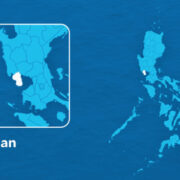My most memorable meals in Indonesia

I am back from Indonesia, where we journeyed through West Sumatra, Central Java, and cosmopolitan Jakarta.
Through the weeklong expedition of Kitchens of the World, my personally curated culinary travels, I was in the company of Indonesia’s most celebrated chef and food guru, William Wongso.
I observed that the Indonesians eat and cook what’s in season—guided by their religion, customs, and traditions. The way they eat is their way of life.
Many of the dishes and delicacies we tried were from recipes that were handed down through generations.
I wish to share my most memorable meals in Indonesia with you.
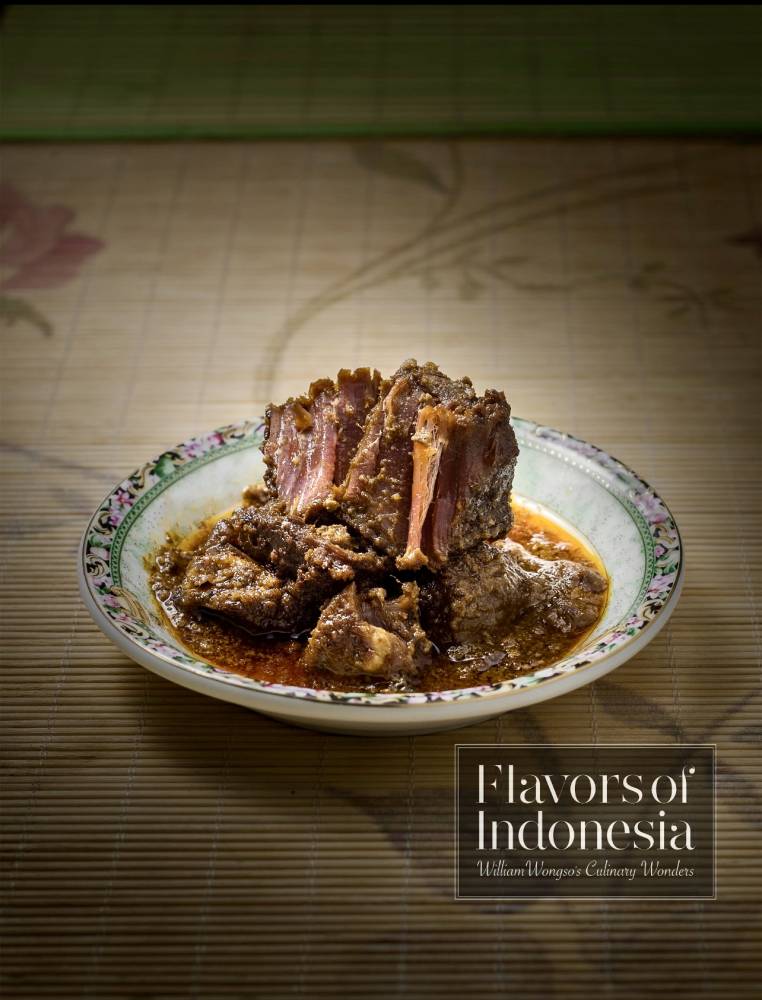
‘Rendang’
Beef rendang in West Sumatra is caramelized beef curry.
The 900 districts in West Sumatra prepare rendang in many ways. The protein used is diverse: from buffalo to duck, even eel. The mix of spices used varies, too.
Chef William thinks that rendang is influenced by Indian curry. It starts off white with the use of fresh coconut cream or santan. In the olden times, dishes were reheated to preserve them due to the absence of refrigeration. The reheated curry was transformed into a new dish that was dry, caramelized, more flavorful and aromatic … Thus rendang was born.
The rendang of West Sumatra is so different that it piqued the interest of National Geographic’s “Uncharted” Season 2 with Gordon Ramsay. William taught Ramsay how the laborious dish is made.
Rendang must be eaten with green chili sambal, hot rice, and with your hands.
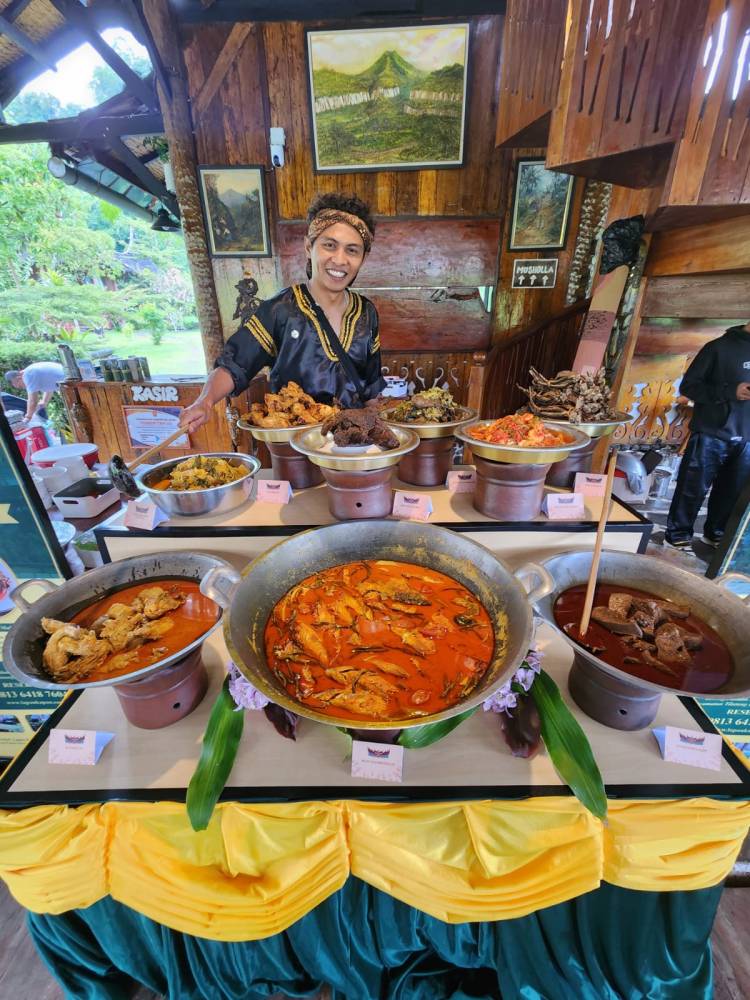
‘Nasi kapau’
Nasi kapau is a traditional dish of Kapau, a small village around Bukittinggi, West Sumatra.
It is not just a dish, it is a way of eating, and a source of livelihood for women who cook using locally grown ingredients to augment their household’s income.
Nasi means rice; nasi kapau is served with a plethora of viands in a massive display. Diners pick from a wide array of food piled high on multileveled racks. The dishes, usually cooked whole or in large chunks, are cut into bite-size pieces and laid over hot rice upon the diner’s request.
One can have as many viands over rice as one fancies. The sauces from the dishes are free flowing, and can be spooned over the rice.
A special rice variety called Ramos is preferred for nasi kapau, as it can absorb the sauces from all the dishes piled on the plate without turning into mush.
My favorite from our nasi kapau spread was tambusu, a duck egg sausage. Made from large beef intestines filled with raw duck eggs, it is simmered in curry sauce.
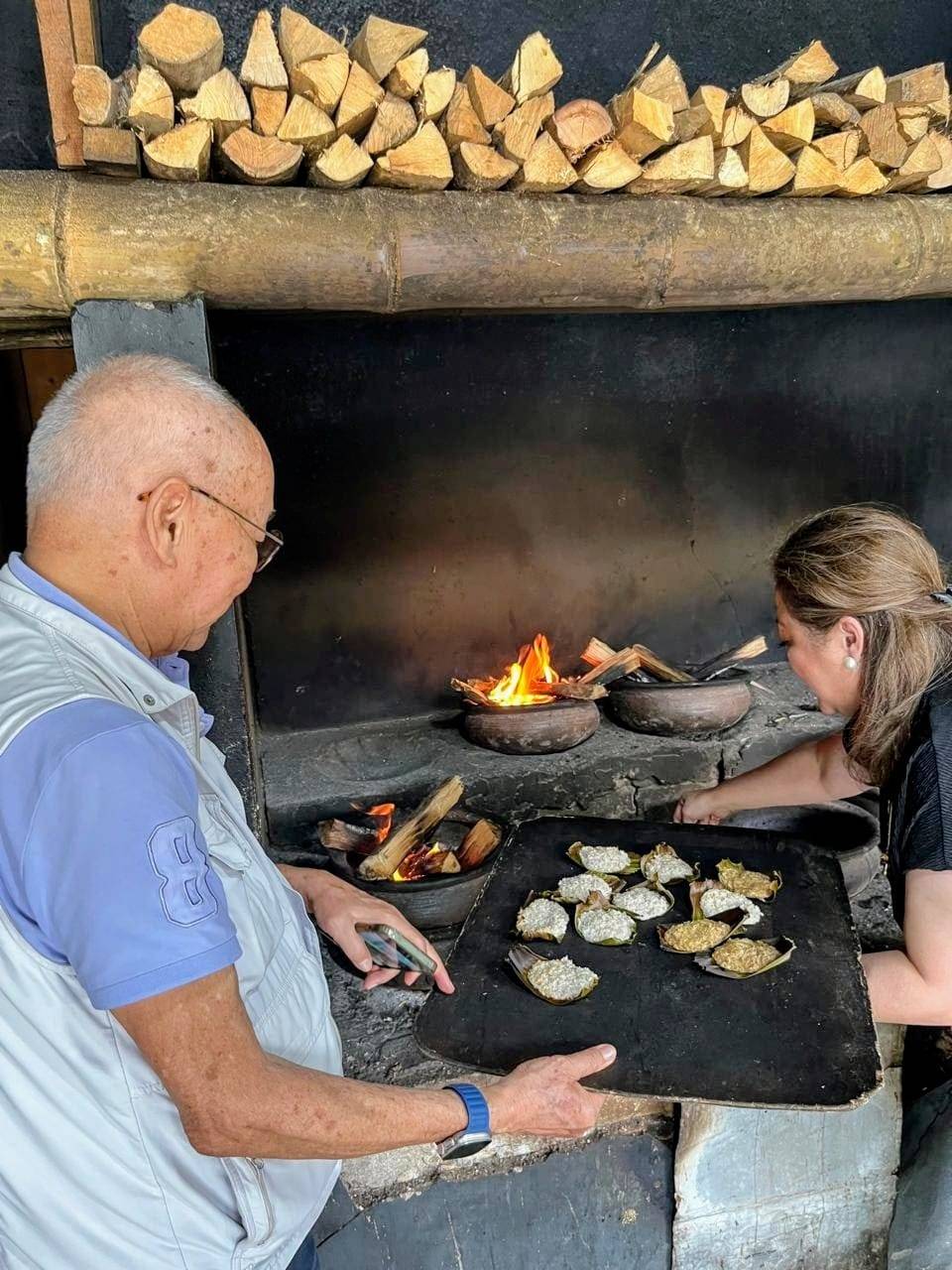
‘Bika talago’
Bika talago is a traditional rice cake from West Sumatra. In texture, it resembles our bibingka.
There are two flavors of bika: one is tinged brown, made with mashed bananas, palm sugar, grated coconut, and rice flour, and the other is white, made from a mixture of rice flour, coconut water and grated coconut and white sugar.
It is cooked by lining cinnamon wood-fired claypots with banana leaves cut into rectangles that serve as liners to prevent the dough from sticking. The dough is spooned onto the banana leaves. Bika talago is best paired with kawa (coffee made from coffee leaves). In the olden days, coffee beans were an elusive commodity, reserved by the Dutch to export to Europe. Locals would enjoy coffee by drying coffee leaves by the kiln and then boiling them.
‘Ayam pop’
Family Benteng is a restaurant in Bukittinggi famous for its ayam pop. Baby rooster legs and breasts are boiled in coconut water tinged with salt, pepper, garlic, and slivers of ginger.
The ayam pop sambal is what transforms the boiled chicken. The sambal is prepared by pounding red chilies, shallots, tomatoes, dried whitebait and salt. This is simmered in coconut oil until reduced and fragrant.
It is customary in the restaurant to pile the chicken bones on one’s plate to see who consumed the most. Our group had 135 pieces of chicken bones! It was so good. This is why the restaurant remains as popular as it was when it first opened in 1947.
‘Sop empal bu haryoko’
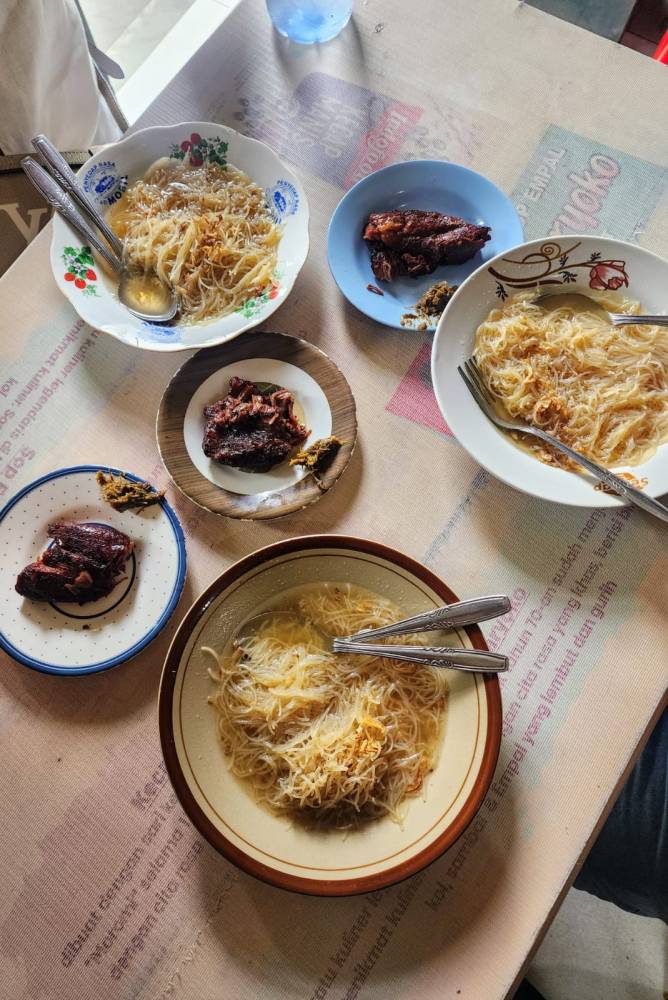
Sop empal bu haryoko is beef soup prepared by Madame Haryoko, located in Muntilan, Central Java, not far from Borobudur Temple.
Sop empal is a simple dish. The sop (soup) is made of clear beef broth with rice vermicelli and cabbage. Served on the side is a chunk of beef braised in palm sugar, garlic, shallots, coriander, lime leaves, lemongrass, and Indonesian bay leaf. It is cooked until it almost falls apart. It may not look enticing, but to the palate, it is so comforting.
‘Sate buntel tambak segaran’
Lamb sate, originally from Solo, Central Java, is made from coarsely chopped lamb meat seasoned with salt, pepper, and coriander. It is shaped like a sausage then wrapped (buntel in Javanese) in caul fat that prevents the meat from drying out once grilled over coal. The sambal is enjoyed with a light sweet soy sauce, pickled cucumbers, and shallots. Another simple but tasty treat.
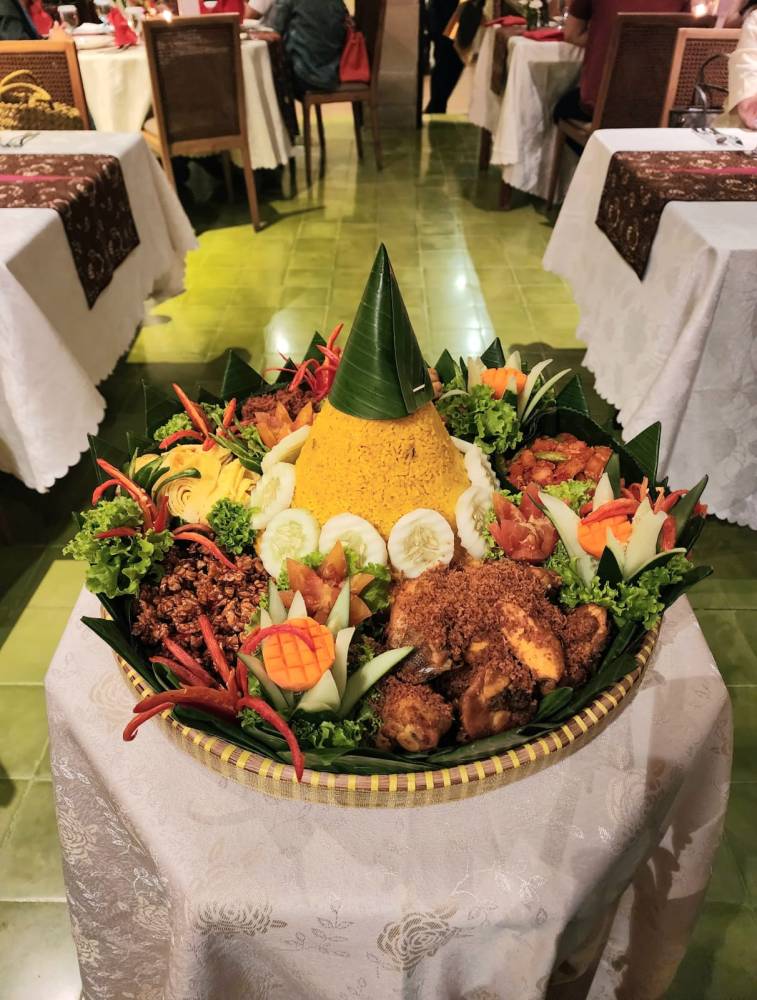
‘Nasi tumpeng’
Tumpeng is the traditional Javanese way of serving turmeric rice, surrounded by a number of viands. The yellow rice is capped with a banana leaf-shaped cone. It is arranged on what is known as a tampah, a round wooden tray lined with banana leaves.
Nasi tumpeng is a visually attractive food display of great cultural significance. It’s a celebratory dish that is served on special occasions.
Common practice is to cut the top of the nasi tumpeng. It is then transferred to a plate with a sampling of all the dishes and condiments that accompany the tumpeng. The ceremonial plate is handed to the guest of honor.
In Yogyakarta, I learned from William that the tumpeng must be evenly scooped from the bottom until the tip of the rice cone comes down. This signifies God (the tip of the cone) going down to be one with the people.
Follow @iamreggieaspiras on Instagram and Facebook; visit reggieaspiras.com.












